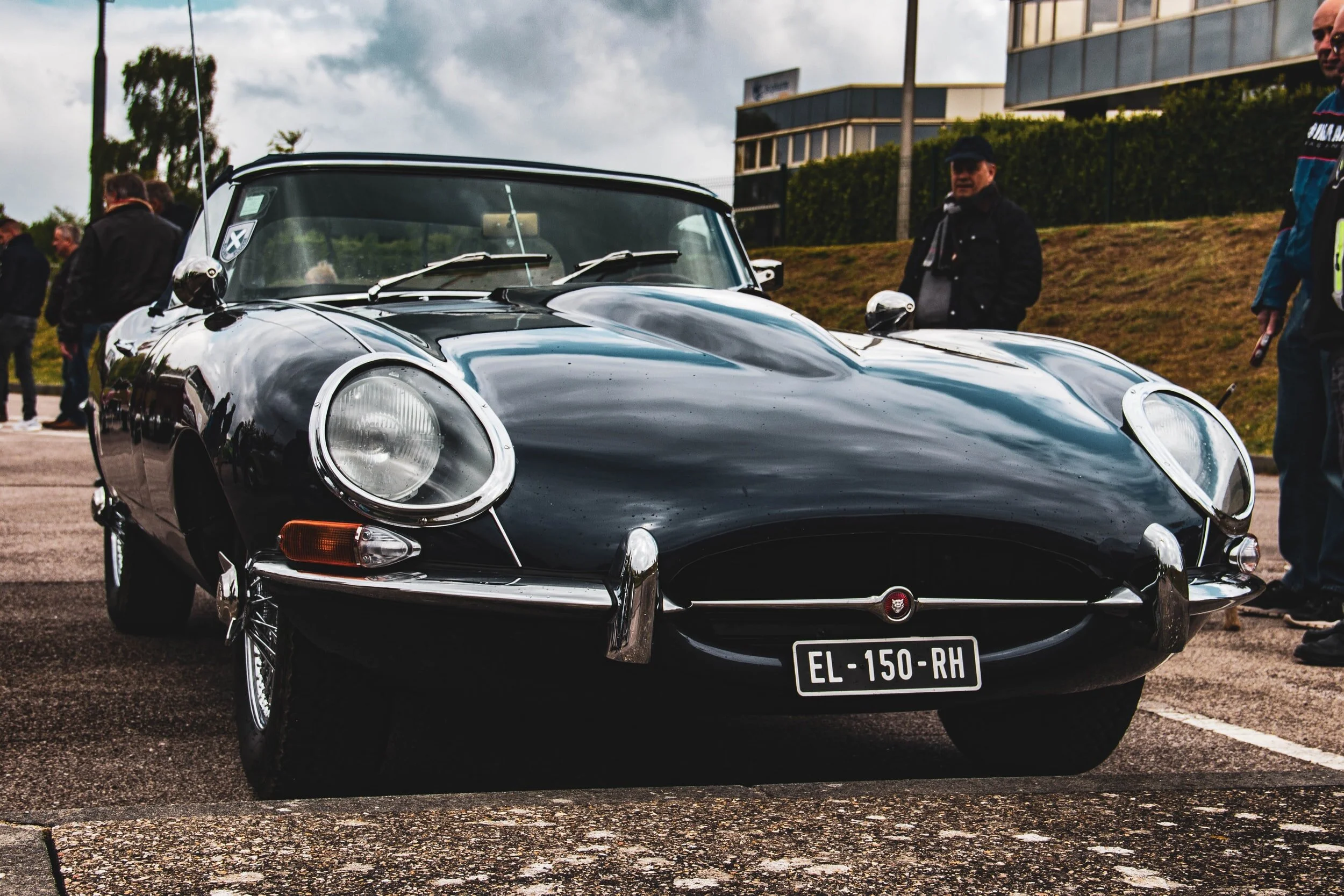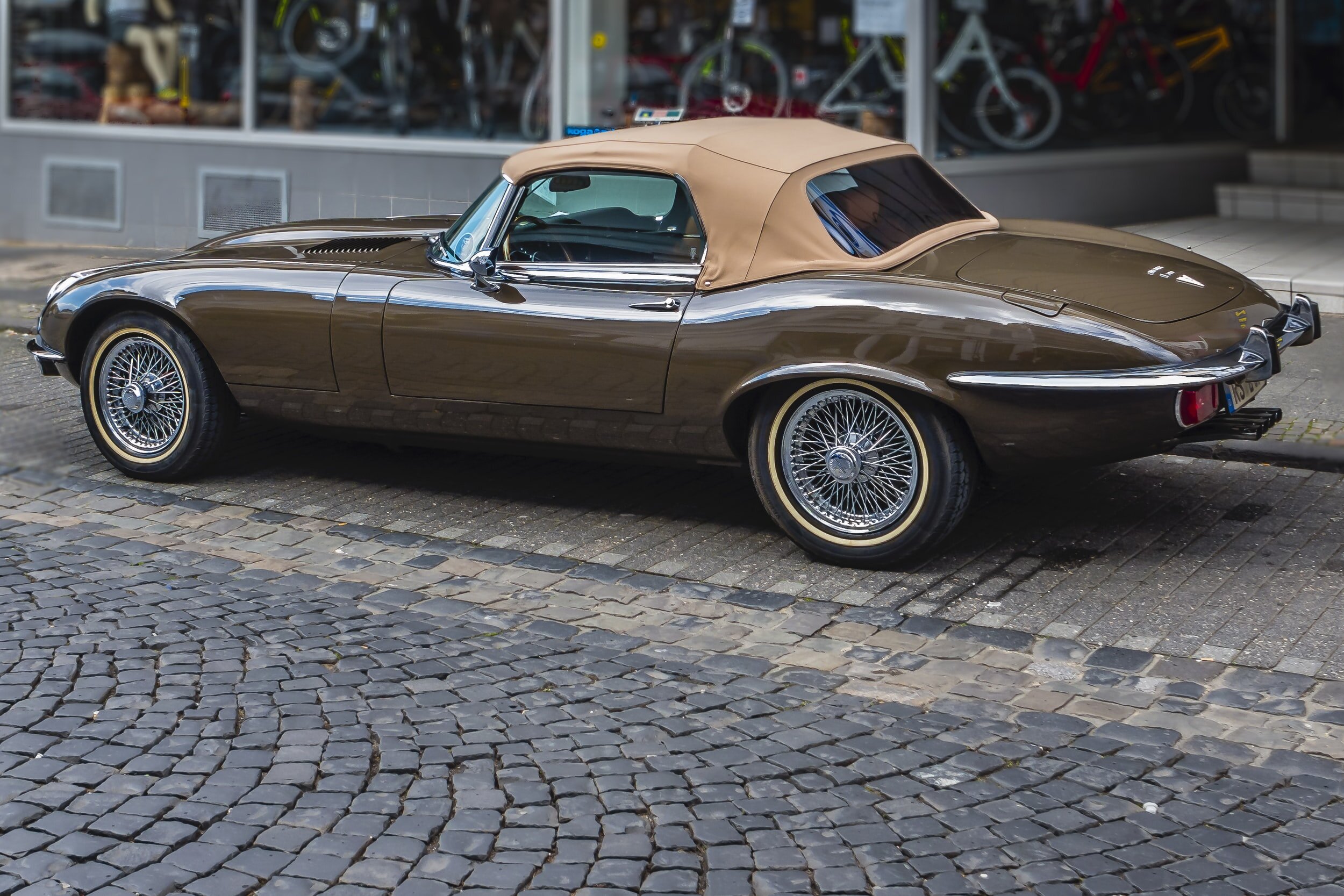Owning a Jaguar E Type
The '60s were probably the most culturally significant and dynamic decade of the 20th century. In just ten years, the world had experienced profound changes in politics, economy, fashion, and culture, with the car industry-changing along with society. In the early '60s, the press coined the term "British Invasion," which marked the influx of British popular culture on the American market. Bands like The Beatles, Rolling Stones, and The Who dominated the airwaves, Her Majesty's secret agent James Bond captured the imagination of millions of movie fans, tales of "Swinging London" parties filled gossip columns and supermodel Twiggy symbolized the '60s women's fashion. By the 1960s, Great Britain had lost almost all of its colonies, but it was still the biggest colonial power in the whole world in terms of culture and influence.
But, "British Invasion" needed a signature car, and Mini was just too small, Land Rover just too rough, and Rolls Royce just too posh and expensive. In 1961, Jaguar introduced the car that symbolized the era, changed the world, and make car enthusiasts scream in excitement just like teenage girls who just heard Paul McCartney sing for the first time. This is a story about Jaguar E-Type, its extraordinary history, and why this car is still relevant, even 60 years after its introduction.
History
By the early '60s, Jaguar was already a well-respected name in the sports and luxury car business. Its reputation was granted by introducing a very successful and fast XK 120 (120 in the name marked the top speed – 120 mph) in 1948, which was the first post-war sports car and revolutionized the segment. During the '50s, Jaguar introduced XK 140, and by the end of the decade, the XK 150 models were improved versions of the original design with better performance. By 1960, Jaguar has sold over 30,000 units, which was considered an enormous success.
During the same time, Jaguar was heavily involved in racing, not just with standard XK models but with legendary C and D-Type purpose-built race cars, which won the 24 Hours of Le Mans three times in a row. Such a performance portfolio made Jaguar one of the most successful brands in motorsport. However, by the late '50's it was apparent that the company need a proper successor to the XK line and model that will incorporate all the racing know-how but in a more modern form.
The first prototypes started appearing in 1957 and were heavily based on a D-Type race car with a signature low silhouette, long hood, covered headlights, and several notable technological features that will appear on production models. Those features were independent coil spring rear suspension (a novelty in those days) and Dunlop-designed disk brakes all around, which were borrowed from the Le Mans-winning D-Type. The name E-Type was chosen as a logical continuation after C and D-Type models. Under the hood was a well-known and potent 3.8-liter, straight-six engine fed by three SU carburetors rated at 265 hp. This unit was basically XK 150 engine just slightly updated for use in the E-Type.
The last and most crucial piece of the puzzle was the design, and this task was given to Malcolm Sayer, Jaguar's designer who already did outstanding work on Le Mans-winning racing cars. Sayer was an aircraft engineer and understood aerodynamics very well, which was rare in the late '50s. Heavily influenced by airplane design, E-type featured a fuselage-style body with a pointy front end, streamline back, and low roofline. Influenced by futuristic American concept cars of the period and "Googie" design, Sayer managed to create a very modern and elegant but still aggressive shape with unquestionable beauty and unique presence. To say that the E-Type was beautiful is an understatement; it is strikingly handsome with perfect proportions, tasteful details, and everlasting appeal. Enzo Ferrari allegedly called it "the most beautiful car in the world," which means a lot coming from a man who personally created some of the best-looking cars of all time.
The Jaguar officially presented the E-Type in Geneve Motor Show in Spring of 1961, causing a sensation amongst the car enthusiasts. The E-Type's appearance made all other cars outdated, not just by design but also by technology. Jaguar's boss, legendary Sir William Lyons, was present to unveil the car himself. With 265 hp under that well-sculpted, clamshell hood, 7.5 seconds to 60 mph, and claimed 150 mph, Jaguar E-Type was amongst the fastest production cars at the moment.
However, the price was more impressive, and in 1961, Jaguar E-Type cost just $5,620 in the US and 2,097 pounds in the UK. Let's put that into the early '60s perspective for better understanding. In those days, Ferrari and Maserati were a bit obscure and costly sports cars, and Porsche, although it could punch above its weight, was still based on VW Beetle with featured 90 hp engine. Lamborghini was a tractor manufacturer only, and Corvette still had a live rear axle. And here you have a fantastic Jaguar E-Type, which was more advanced, faster, and looked fantastic and was 1/3 of the Ferrari 250 GT price. No wonder Jaguar was swept with orders, and the factory was working in three shifts to meet the initial demand.
Model Evolution
Jaguar E-Type Series 1 (1961 – 1967)
The first-generation E-Type models are called Series 1 and were produced in three body styles. When the car was launched, only two-seater Fixed Head Coupe and Roadster were available, but in 1966, a more practical 2+2 Coupe was added to the lineup. This model had two extra seats in the back, a slightly higher roofline, and a longer wheelbase and was offered with 3-speed automatic transmission as an option. In 1964, Jaguar offered a larger 4.2-liter six-cylinder engine in E-Type, which improved acceleration a bit. It was rated at the same 265 hp as the 3.8-liter unit but delivered about 10% more torque (283 lb-ft).
The magazine testers of the day manage to confirm the official performance numbers. However, the US-delivered models had a few horsepower less than Euro-spec models due to more restrictive emissions regulations. However, this not affected E-type's appeal to US customers, and the majority of the production was exported to America. Due to extraordinarily high demand, Jaguar managed to sell over 38,000 Series 1 cars in just six years.
Jaguar E-Type Low Drag Coupe
Although there initially weren't any plans for the factory competition version, in 1962, Jaguar decided to make a race car for the GT championship based on the E-type. Called the Low Drag Coupe, it was a lightweight version of standard E-type with more power, better brakes, and a special body made out of aluminum. Even though those E-types were fast and competent race cars, they weren't successful, and Jaguar decided to concentrate on the production of road-going models. They made 12 cars sold to private teams and raced until 1965 but weren't competitive enough after.
Jaguar E-Type Series 2 (1968 – 1971)
The E-Type Series 2 was introduced in 1968 and was characterized by several exterior modifications and improvements in comfort and equipment. The S2 cars are easily recognizable by open headlight, which lost the Plexiglas cover due to US safety standards. Even though those sexy headlights were one of the signature E-Type's design features, Jaguar complied and redesigned them in order to continue selling cars in America. Similarly, the rear end was restyled with rear lights placed underneath the bumper. Between the Series 1 and Series 2 models, there was short-lived Series ½, which had Series 2 open headlights but Series 1 tail lights and was sold for less than a year (1967 – 1968).
In terms of mechanics, Series 2 was practically unchanged, but the 3.8-liter six-cylinder was gone. The 4.2-liter was the only engine on offer, and the car gained a few pounds due to plusher interior and better equipment. Like the S1, the Series 2 was offered as a two-seater coupe and convertible and as a 2+2 coupe with rear seats. Even though the E-Type's design was starting to show its age in the late '60s, the demand was still strong, and Jaguar sold almost 19,000 cars until the Series 3 arrived in 1971.
Jaguar E-Type Series 3 (1971 – 1974)
Series 3 marked the most significant change in E-Type's history, not just by design but in technology and character, as well. The 1971 Jaguar E-Type featured different wheel arches, front end design with a bigger grille, and was available in just two versions – Roadster and 2+2 Coupe. However, the exciting improvement was under the hood. The venerable XK six-cylinder engine was gone and replaced by a glorious and ultra-smooth 5.3-liter V12 unit. With 272 hp and more torque, this V12 easily maintained the previous models' top speed but improved acceleration to 6.7 seconds to 60 mph. More power meant better brakes, revised suspension, and, unfortunately, more weight.
However, all of that significantly changed the E-type character, and in its third and final series, this wasn't the athletic sports car it was ten years before. The Series 3 was a fully-grown Gran Turismo model with a comfortable interior, air conditioning, and automatic gearbox, still powerful enough to outrun most sports cars of the period but more suited to boulevard cruising than street racing. Yes, the Series 3 was more mature and better mannered but arguably less exciting than the earlier models. Although the Jaguar sold the last remaining E-Types in 1975, the production ended in 1974 after over 70,000 cars, 15,287 of which were Series 3 models.








